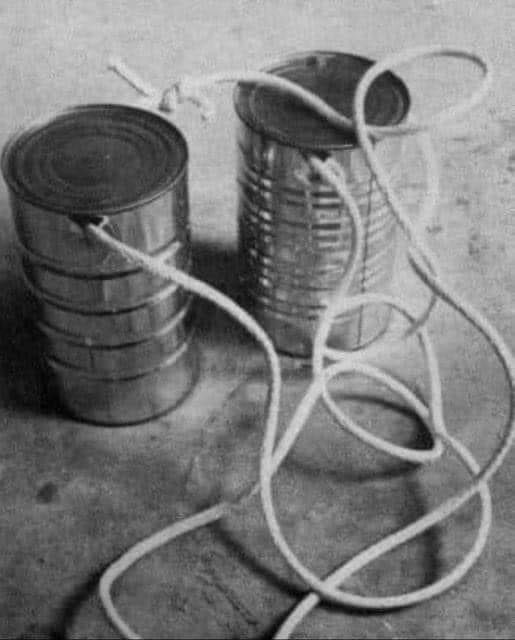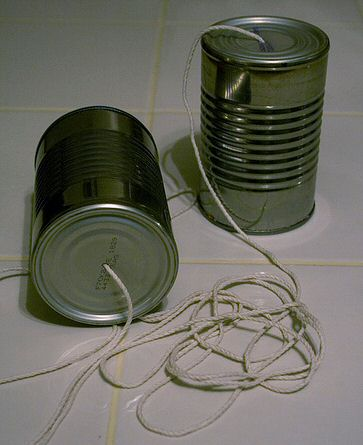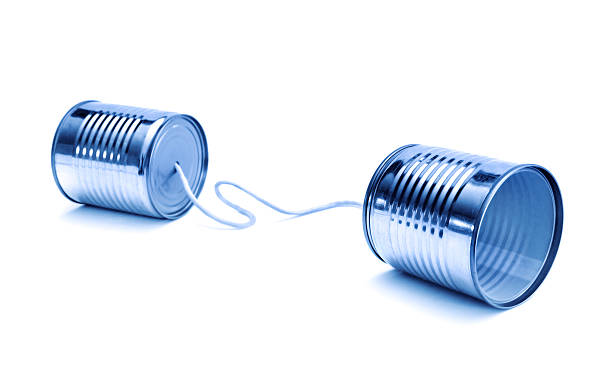The telephone stands as one of the most transformative inventions in communication history. But before the electric telephone, there was a simpler version that many of us know well—the homemade telephone made of cups and string. This basic device isn’t just a childhood experiment; it represents the early concepts of sound transmission that laid the groundwork for modern telephones. Let’s dive into the history, the science behind this DIY telephone, and how it connects to the development of the electric telephone by Alexander Graham Bell.

The Early Days of Telephone Technology
The telephone’s journey began long before Bell’s famous call in 1876. Early communication devices were based on the transmission of sound waves through physical mediums like wire, string, and even tubes. This is where the concept of the homemade telephone comes into play—a simple device that relies on physics to transmit sound.
The Acoustic Telephone: How It All Started
In 1672, English scientist Robert Hooke created the first known acoustic telephone. He discovered that sound could travel along a wire or string, allowing for basic communication over short distances. His device used tensioned wire, functioning similarly to the modern cup-and-string phone.
This acoustic method of transmitting sound was crucial in shaping future communication technologies. Although limited by distance and clarity, it paved the way for later innovations like the electric telephone.
The Classic Homemade Telephone: A Simple Science Experiment
The homemade telephone is a fun project that uses basic materials to mimic early communication methods. It’s made from two cups (often plastic or paper) connected by a piece of string. The device demonstrates how sound waves can travel through a solid medium, offering a hands-on lesson in sound physics.
How to Make a Homemade Telephone
Here’s a quick guide to making your own DIY telephone at home:
Materials:
- Two plastic or paper cups
- A long piece of string (at least 10-15 feet)
- A sharp object (e.g., a pencil) to poke holes
Instructions:
- Poke a small hole in the bottom of each cup.
- Thread one end of the string through the hole in one cup and tie a knot to secure it.
- Repeat with the other end of the string and the second cup.
- Pull the cups apart until the string is tight, then have one person speak into one cup while the other listens from the second cup.
This simple device shows how vibrations created by speech travel through the string, creating sound waves that can be heard on the other end. It’s a creative way to teach kids about the basics of sound transmission and the principles behind the telephone’s invention.
The Evolution of the Electric Telephone: From Concept to Reality
The concept of transmitting sound across distances reached a new level of innovation in the 19th century. Alexander Graham Bell, a Scottish-born inventor and teacher of the deaf, is credited with developing the first working electric telephone in 1876. His invention allowed for clear, long-distance communication, changing the world forever.
Alexander Graham Bell’s Contribution
Bell’s interest in sound and speech was sparked by his work with the deaf community. This passion led him to explore ways of converting sound waves into electrical signals, which could then be transmitted and converted back into sound.
In 1874, Bell began collaborating with Thomas Watson, an experienced electrician. Their experiments culminated in the first successful telephone call on March 10, 1876, when Bell famously said, “Mr. Watson, come here. I want to see you.” This moment marked the official birth of the electric telephone.

The Rise of the Bell Telephone Company
After his invention gained traction, Bell established the Bell Telephone Company in 1877. By 1886, over 150,000 people in the United States owned telephones. This success set the foundation for modern telecommunication networks, which continue to evolve with each passing decade.
The Science Behind Telephones: From String to Signals
While the homemade telephone uses physical vibrations to transmit sound, the electric telephone operates on a different principle. It converts sound waves into electrical signals, which are then transmitted through wires or radio waves.
How Sound Transmission Works in a Homemade Telephone
In a homemade telephone, sound waves from the speaker’s voice create vibrations in the air. These vibrations cause the cup to vibrate, which in turn sends vibrations down the string. The tightness and material of the string affect the clarity of the transmitted sound.
For the best results, use a non-stretchy string like fishing line or dental floss. The string should be pulled taut for the vibrations to travel effectively. If the string is too slack, the vibrations will dissipate, making it difficult to hear the sound on the other end.
How Electric Telephones Transmit Sound
The electric telephone converts sound waves into electrical impulses. When someone speaks into the mouthpiece, a diaphragm vibrates, causing fluctuations in an electrical circuit. These fluctuations travel as electrical signals through wires, and at the receiving end, another diaphragm converts the signals back into sound.
The Telephone’s Impact on Global Communication
The invention of the telephone revolutionized communication by allowing people to share information instantly over long distances. This breakthrough changed industries, accelerated globalization, and reshaped how societies interacted.
Key Milestones in Telephone History
- 1838: Samuel Morse invents Morse code, enabling telegraphic communication.
- 1858: The first transatlantic telegraph cable connects the U.S. and England.
- 1876: Alexander Graham Bell invents the electric telephone.
- 1927: The first transatlantic phone call is made using radio waves.
- 1977: The first cellular network test is launched in the U.S.
- 2003: Internet-based telephony emerges, leading to the development of apps like Skype and WhatsApp.
- 2008: The rise of smartphones, with Android and iOS dominating the market.
These milestones illustrate the rapid evolution of communication technologies, from basic acoustic methods to complex digital systems.

Why Homemade Telephones Still Matter in Education
In an age dominated by smartphones and digital communication, the homemade telephone remains relevant as an educational tool. It’s a simple, hands-on way to introduce children to the basics of sound waves, vibrations, and early communication technology.
Benefits of Homemade Telephones for Learning
- Understanding Sound Physics: Making and using a homemade telephone helps children grasp the concept of sound waves and how they travel through different mediums.
- Encouraging Curiosity: Building a DIY telephone sparks curiosity about the origins of modern communication technologies, inspiring further exploration.
- Promoting Creativity: Constructing a homemade device encourages problem-solving and creativity, skills that are essential for future innovators.
Conclusion: From Cups and Strings to Smartphones
The homemade telephone is more than just a nostalgic childhood experiment; it’s a link to the origins of modern communication. Starting with Robert Hooke’s acoustic devices and culminating in Alexander Graham Bell’s electric telephone, the evolution of telephony demonstrates the power of innovation. The homemade version serves as a simple yet effective teaching tool, connecting today’s tech-savvy world with the early concepts that made instant communication possible. As we continue to advance technologically, it’s worth remembering that even the most sophisticated devices started with the simplest of ideas.


